How to Rescue Underwatered Plants | Save Dry Plants!
Plants that don’t get enough water may eventually be facing certain death. Learn how to rescue underwatered plants as soon as you notice a watering problem.
Both underwatering and overwatering plants can cause issues and risk the health of your plants. Catching the watering problem early can help you reverse it to improve the health of your plants.
This article focuses on how to rescue underwatered plants. You may also be interested in my other post on how to rescue overwatered plants!
What Are Some Signs of Underwatered Plants?
Underwatering plants happens at home in the garden, and probably even more frequently at garden centers and nurseries.
Watch for these signs of underwatered plants:
- Soil Clues
- Visibly dry soil
- Soil shrinking away from the edges of the pot or raised bed
- Soil looks hard, compact, and lighter in color
- Leaf Signs
- Dry, brown, crispy leaves, especially the edges
- Yellow, curling leaves
- Lower leaves that are dry and yellow or brown as an early sign
- Withering and wilting leaves
- Flower Signs
- Buds or blossoms that are also brown, dry, and/or crispy
- Withering or wilting flowers
- More Clues
- Slow or stunted growth
- Dry, brittle stems
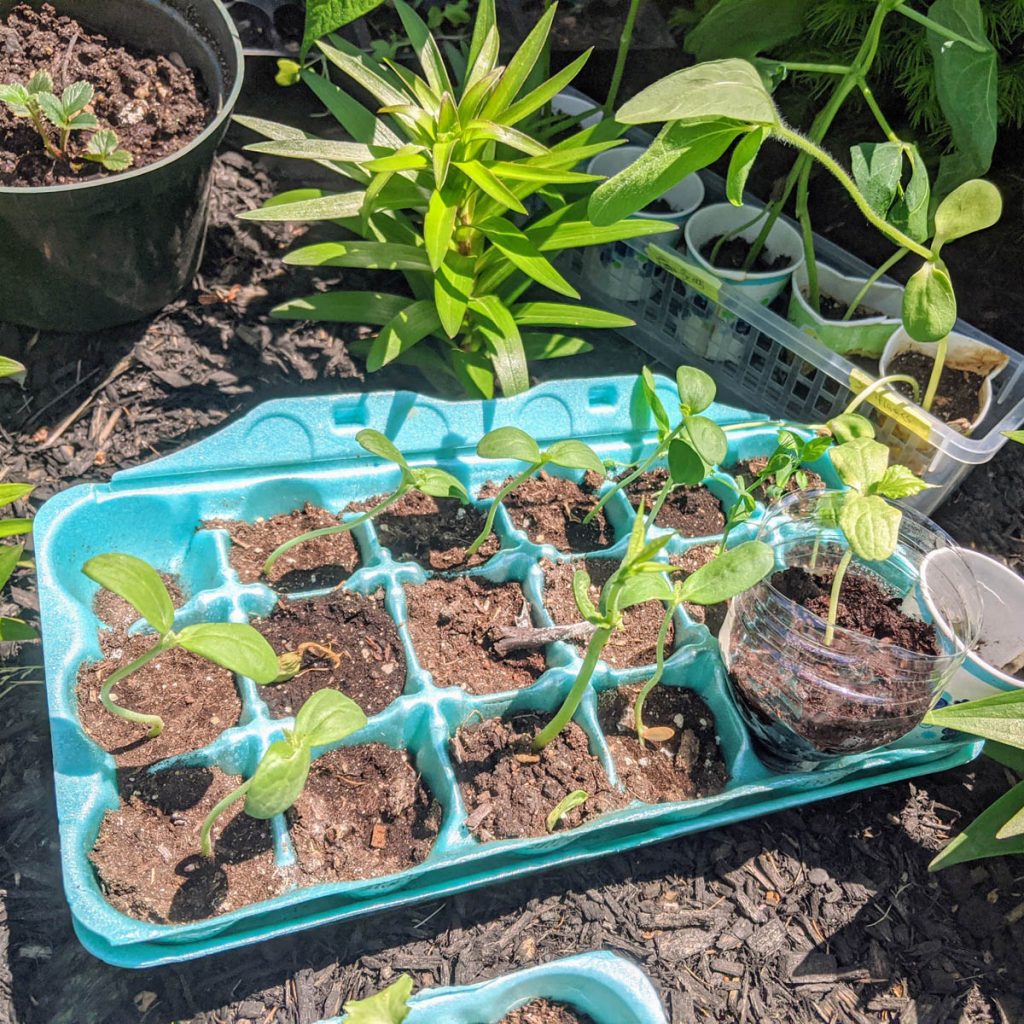
With so many plants to care for at a garden center, it’s nearly inevitable some plants won’t get quite the amount of water they need. If you find them in time and they’re still in decent shape, you might be able to save underwatered plants.
What Is Water Stress in Plants?
Water stress means plants are suffering from moisture issues in the soil. The cause could be from too much or too little water, and sometimes the symptoms appear similar. The water quality may also pose problems for your plants.
Keep reading to learn more about water stress from underwatering plants.
Why Aren’t My Plants Getting Enough Water?
Plants may be underwatered for a number of reasons:
- Drought and lack of rain
- Not watering deeply enough
- Not watering often enough
- Underwatered at the garden center
- Not enough water while you were on vacation
- Purchased from a clearance rack
- Forgotten or otherwise neglected
Sometimes it’s not too late to rescue underwatered plants!
Once you notice your plants are water stressed, you can do something about it!
Tips on How to Rescue Underwatered Plants
You can sometimes save and revive dry plants. Consider these tips to help rescue dry, underwatered plants.
Consider Watering More Often or More Deeply
Water sufficiently. Avoid overwatering, but be sure to give this thirsty plant a drink!
- More Water – If underwatering is surely the problem, consider watering plants more often and increasing the amount of water.
- Ease into It – Increase a little bit at a time to avoid stressing the plants with too much water.
- Water from the Bottom Up – Another helpful technique involves placing the pot in a bucket or tray of water so the plant can soak up water from the roots upward. After several minutes, set the plant aside to drain and absorb the water.
Trim Away Dead Growth
Deadhead the plant, removing any spent blooms. Prune away dry, brown, dead leaves and plant matter. This lightens the load for the plant so it can focus on growing healthy rather than saving its dying parts.
Monitor Moisture
Poke your finger into the soil about two inches deep to see if it’s too dry. Water accordingly. You may also like to place a popsicle stick in the soil to help monitor moisture levels over the next few days.
A moisture meter can also help when in doubt!
Consider Shade
Partial shade may help to give the underwatered rescue plants a break from the intense sun as they recover. If you have potted plants that are suffering from underwatering and potentially too much sun, try moving the pots into the shade.
Check Plants Daily
If you’re like most plant parents, you probably love checking on your plants and gardens to see what’s new! Keep going with the adventure of gardening. Check your plants every day to see if they need water or other care.
You should soon see new growth in a few days if your efforts are helping the plants resolve their water stress issues in time.
Tips to Avoid Underwatering Plants Long-term
In my garden, I find that watering can be a challenging task, especially when my hose hookup is on the total opposite side of the yard from some of my raised beds.
Here are some tips for better planting placement and tips to avoid underwatering your plants.
- Establish gardens near your hose hookup, if possible! For most of my gardening life so far, the hose was far, far away from my plants. Just this year I finally managed to install raised beds near my hose hookup. It’s been a true blessing and I’d highly recommend it. Also valuable for the future as we aren’t getting any younger!
- Try a moisture meter to check the soil. A moisture meter can tell you if the soil is too wet or too dry or just right. The device I have also monitors sunlight and supposedly monitors pH, but I am not convinced on that one.
- Plant by water needs and proximity to the hose. It’s understandable that all your gardens won’t be right next to the hose. Try to plant things that need more water closer to the hose. Leave drought-tolerant plants further from the water hookup to minimize stress on the plants and you.
- Pot up plants that frequently dry out very quickly. It’s possible the plant needs more room or may need you to amend the soil. Some soils contain a lot of peat moss and peat tends to dry out quickly.
- Consider an irrigation system with a hose timer. Automating your watering saves you time and makes sure your plants get watered daily. It can be a total lifesaver when you go on vacation and don’t have someone to watch and water your plants.
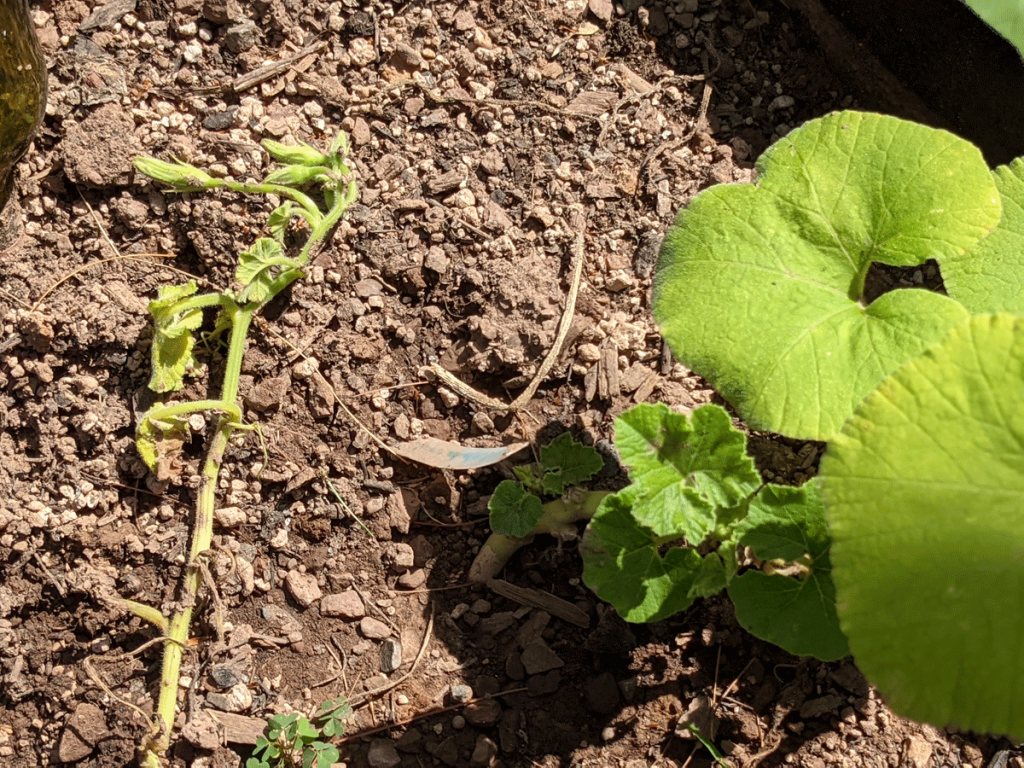
Final Thoughts: How to Rescue Underwatered Plants
Dry plants need lots of TLC to make sure they recover from the dry spell. You surely don’t want to overdo it, but be sure to pay close attention to their watering needs.
If you are buying discounted plants to rescue from a nursery or garden center, keep in mind that some of those plants may be overwatered or underwatered. Look for signs of stress on the plant and try to identify how viable it might be to save an underwatered plant.
If just the leaves or flowers are affected and not the stems, that should be a good indicator that you have a chance to save the plant. If the stems are in a bad way, I would probably choose a different plant.
When you discover how to rescue underwatered plants, you have the power to turn around your garden with healthy flowers, veggies, herbs, fruit, and ornamentals.
It takes a little practice and even experienced gardeners might not get it right every time. Just do your best and keep learning!
Do you have tips or questions on how to rescue underwatered plants? Please share them in our comments section! We’d love to chat.
Happy Gardening!

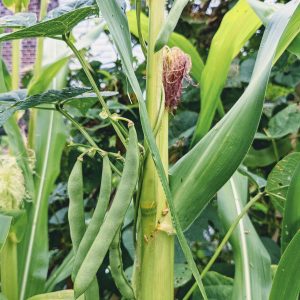
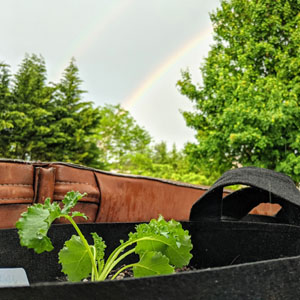
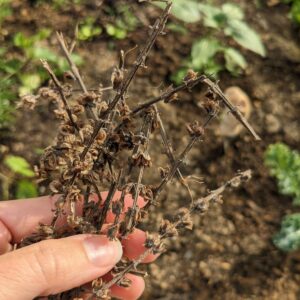

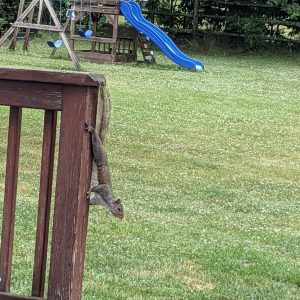
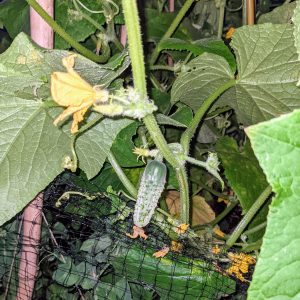
I have 2 indoor plants: (Madagascar Jasmine-Stephanotis Floribunda) & (Anthurium). I bought them 3 years ago. The Jasmine bloomed twice during the first year then stopped blooming two years ago.The Anthurium was blooming all the time but unfortunately stopped 4 months ago. I would appreciate if you had any advice for me or if there is any reasoning behind this. Thank you
Hi Saleh Al, nice hearing about your lovely indoor plants – thanks for stopping by! The Madagascar Jasmine – Stephanotis Floribunda is one of my all-time favorites. I had a clipping of one that I purchased and it took 7 years for it to bloom. I was very patient waiting for it and unfortunately my plant did not survive the hot summer sun when I tried to let it enjoy the outdoors for a bit one summer shortly after blooming. Are there any clues to the health of your plants? How does the foliage look – are both healthy and thriving otherwise? Also check if the pots are big enough that the roots aren’t bound or overgrown. Insufficient light could be the real problem if your plants aren’t getting enough sunlight… consider LED grow lights if this might be the issue. Feel free to reply back and I’ll try to help if I can! Good luck!
Thanks for your valuable advice. The leaves are dark green (sometimes I’ll found 1 or 2 yellow leaves). The pot was changed to a bigger one about 5 months ago. The room temperature is ranging 18 – 23 C throughout the year. Now, I think the lighting is the problem, since I’m living in Ontario Canada, & the room is North, the plant isn’t exposed to enough sunlight, so I will put a LED grow light & wait for the upcoming summer. Thank you again & I will inform you the result.
Hi Saleh Al, great to hear back from you! It does sound like you will have better luck adding an LED grow light for your plants and better still with the summer. I hope this sorts out the blooming issue for you and would definitely love to hear your results. Wishing you all the success and beautiful blooms! Thanks again for the update. Happy Gardening!